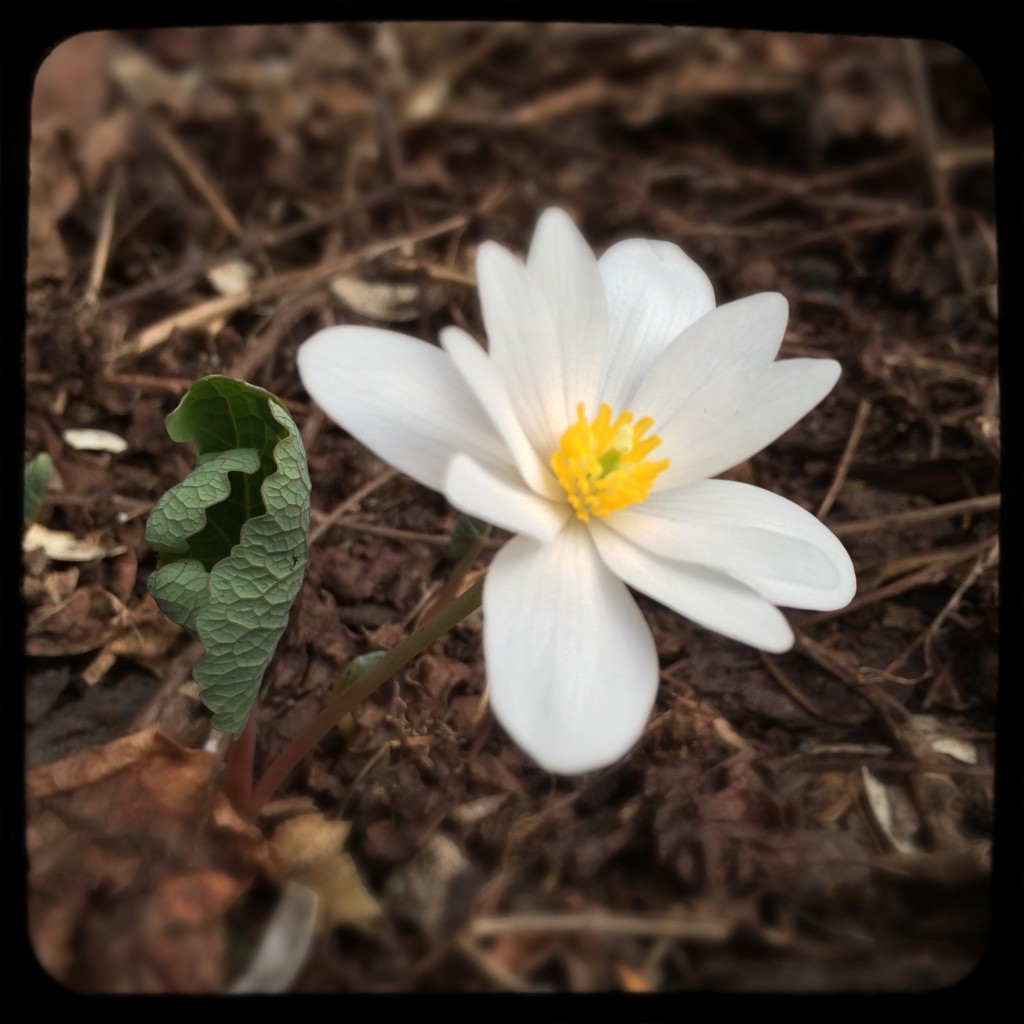 The first flower to bloom in my garden this spring is bloodroot. I got this native plant from my favorite plant nursery Project Native in Great Barrington, MA. My first encounter with this sweet flower was on a hike in early spring a couple of years ago up in the Berkshires. Although spring was definitely hitting, it was still too early for anything more than buds on the trees. As we walked along, we spied lots of these beauties popping up. They just screamed spring. There was something so hopeful about this flower springing up out of what still looked like winter. I was smitten.
The first flower to bloom in my garden this spring is bloodroot. I got this native plant from my favorite plant nursery Project Native in Great Barrington, MA. My first encounter with this sweet flower was on a hike in early spring a couple of years ago up in the Berkshires. Although spring was definitely hitting, it was still too early for anything more than buds on the trees. As we walked along, we spied lots of these beauties popping up. They just screamed spring. There was something so hopeful about this flower springing up out of what still looked like winter. I was smitten.
I bought a plant a few years ago. Last spring was to be the first time I would have bloodroot in my garden. Unfortunately I let my chickens loose in the garden and they ran right to that spot and danced a cha cha on the plant and shredded it beyond repair. I was afraid that they had killed it. Needless to say, I didn’t see a flower that year.
On my early spring rounds of the garden, when I’m searching for any signs of life, I noticed the small curled leaf of the bloodroot plant! A couple of days later the little flower opened. Isn’t it lovely?
Bloodroot (Sanguinaria canadensis) is so named because of the dark red of its root. It has been used medicinally for ages. Applying the root directly to skin, kills the cells, which has led people to try and use it as a way to kill cancer cells. It is currently added to toothpaste and mouthwash as an anti-placque and antibacterial agent.
Bloodroot grows in part shade to shade. It prefers woodlands. I have it in a particularly shady spot in my garden. It already looks as though it is spreading, so hopefully a few more blooms will pop up this spring. After it is pollinated, the petals drop off and a seedpod forms soon afterwards. I’m looking forward to seeing the whole process this year.
